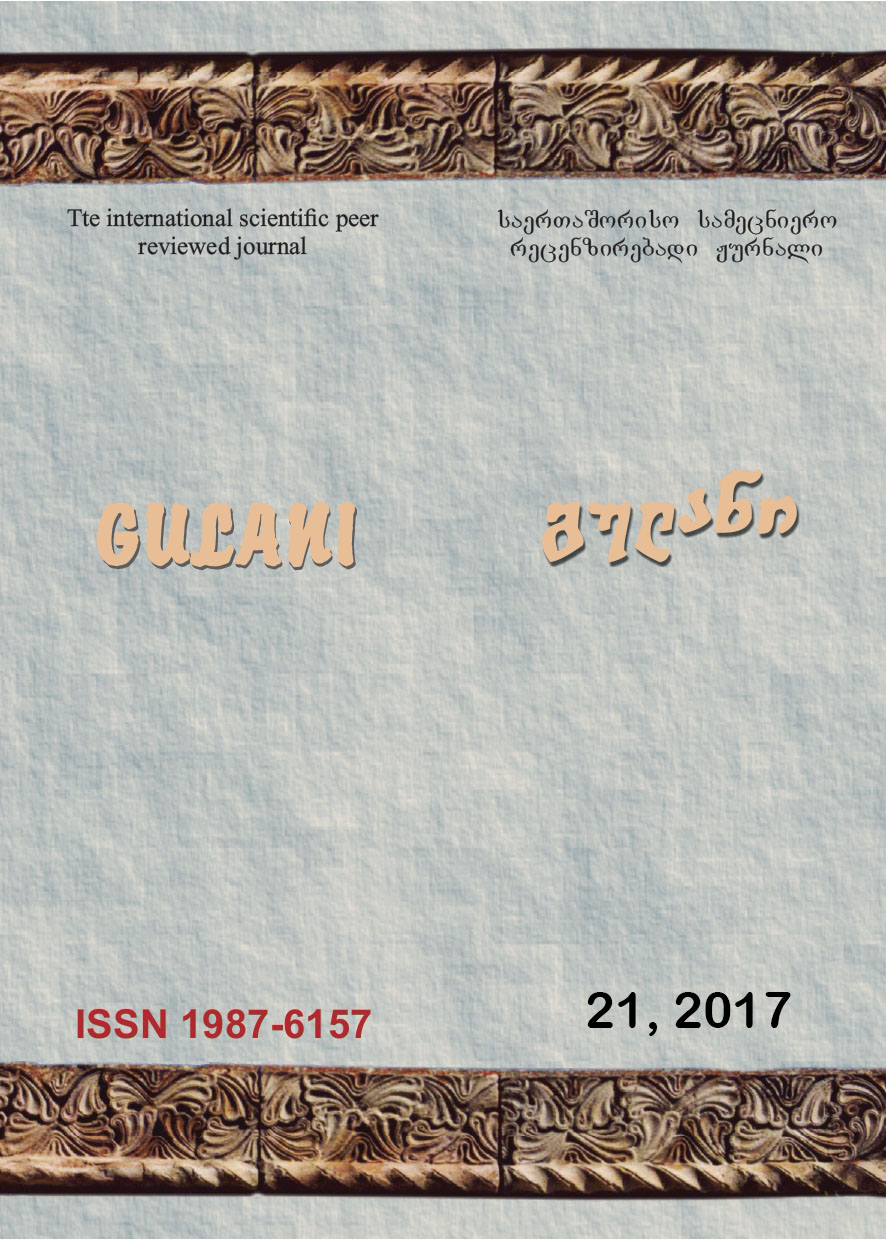TRANSLATIONS OFCOSMA JERUSALEMS HEIRMOS AND THEOTOKIA IN THE XC GEORGIAN IADGARI
Main Article Content
Abstract
In the composition of hymnographic Canon particular importance is attached
to heirmos of ode. The latter determines the number of following syllables
of the Troparion and rhythm. For creating the Canon, first thing to do is the
creation of the text and putting melody on it. In scientific literature Cosma Jerusalem
and John Damascus are considered to be such scholars, poet-musicians.
One part of scientists (Follieri, Gertsman) mention, that the creator of the Heirmos
and Canon of the text itself can’t be the creator of the music either. With
this point of view John Damascus is not considered to be such hymnographer.
As to Cosma Jerusalem, he is called “Melodos”, “Hymnodos” according to
Greek written sources. To his musical education point: Manuscript of “Lives”,
ascription of one of Greek lists confirmed
by Filaret, information of Kedrin, where are enlisted the names of hymnographers
and only Cosma is named by “Melodos”. Thus according to written
sources Cosma is presented as creator both of the text and melody. In majority
of hymnographic Canons the author of Heirmos is Cosma himself, only in some
cases (in the Canons of St. David and Jacob, St. George, St. Mina the martyr)
Cosma appeals to Heirmos of John Damascus for some odes. Georgian translations
are inscribed in the collection of Georgian Heirmos and Theotokia of the
X-XI centuries. According to the texts of Heirmos published by E. Metreveli,
we have compared Greek originals with discussed translations of Heirmos of
Hymnographic Canons. On the basis of comparison of differents cases of the
translation of Heirmos have been distinguished. 1. Translation stands close to
the original both textually and metrically. 2. Metrical exactness is kept with textual
closeness to the original. 3. In Georgian translation Heirmos of the original
is changed by other translation of analogical Heirmos. Besides this, several interesting
cases by other translation of analogical Heirmos. Besides this, several
interesting cases were confirmed among Georgian translations. For example, E.
Metreveli considered Heirmos “აბრამეანთა ყრმათა” as free, reducaltranslatin
of Cosm’s Heirmos “აბრამეანთა ყმათა”. (is met in the canons of St. David and Jacob and Transfiguration). The mentioned translation is exact translation of the other Heirmos having analogical beginning. Interesting examples are met in the translation of the Canon of Theophania, in the V and VII odes. In particular complete texts of Heirmos and not the be-ginnings are given with the texts of Canon. Different translations of the same Heirmoses are met in the collections of Heirmos. Translations given with the texts of Canons stand closer to proper Greek original and the Troparions of odes repeat namely the number of syllables of the translation of the Heirmos of Iad-gari. Studying translations of Heirmos has shown different attitude of the Geor-gian translations towards texts of Canons. In most cases translator of the Canon uses already existed translations of Heirmos and doesn’t try to find their Greek original that’s why Heirmos is given only with the beginning to the Canon of the text. Two mentioned cases confirm that translator sometimes translates Heirmos from the beginning with the object of approaching to the original.
By comparing translation of Heirmos with the Troparion of Canon it was revealed that the evenity of Heirmos and Troparion is kept in Georgian translation, maximal difference between Heirmos and Troparian are eight syllables.
One more important element of hymnographic Canon is Thotokion. In some cases this function was fulfilled by the IX ode with Heirmos. In general The-otokion is called troparion attached to the end of every ode. In Georgian hym-nography Theotokias have been appeared analogical to Byzantine Canon and assumed a grave systematic character in that way, that every Heirmos had proper metric-rhythmical Theotokion. Repertory of Theotokias were joined in the col-lections of Heirmos and that’s why inGeorgian tradition collection is called “Heirmos and Theotokia”. This is purely Georgian phenomenon. Greek origi-nals of the translations of Theotokia are not established, their correspondings of the X centuries and later are not seen in Greek collection of manuscript. Trans-lations of Iadgari show that the translators gave particular attention to The-otokias, because every ode contains Theotokia, furthermore it is also remarkable that Heirmos and Theotokia are given to the translation of the Canon with their proper Theotokia invariably. In the Canons of Cosma Theotokias is seldom con-firmed. Theotokias are met in the Canons of St. George, Christ and Ressurec-tion. The only translation of Theotokia of Cosma was confirmed in Georgian translations. Theotokias metrically correspond with proper Heirmos. In majority of Georgian translations maximum difference are eight syllables here too.
